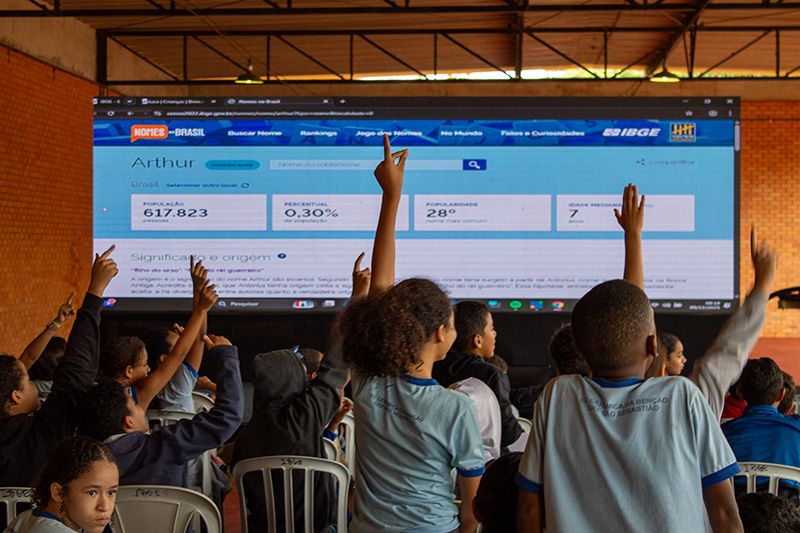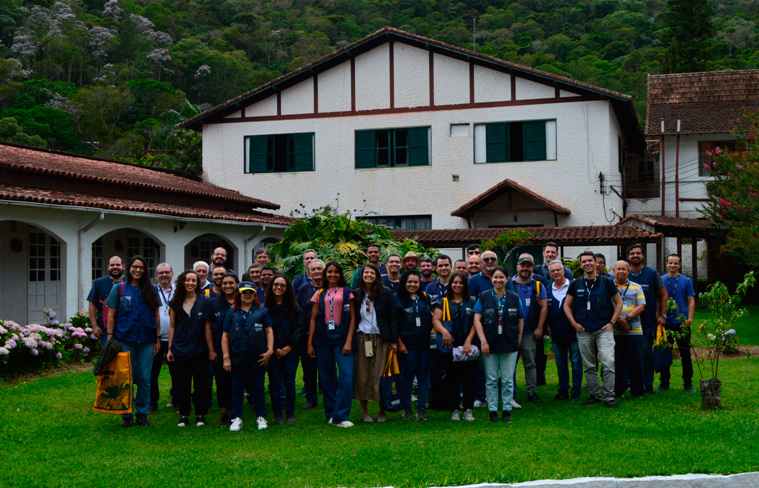Monthy Continuous PNAD
Quarter ending in October has lowest unemployment rate in 13 years: 6.2%
November 29, 2024 09h00 AM | Last Updated: November 29, 2024 03h46 PM

The Continuous PNAD from August to October 2024 brought the lowest unemployment rate among the 152 moving quarters that comprise its time series, started in January-March 2012: 6.2% of the Brazilian workforce, the equivalent to 6.8 million persons looking for a job. This, in turn, was the lowest number of unemployed persons in a decade or, more precisely, since the quarter ended in December 2014.
The smallest unemployment in the time series was a consequence of the record in the number of employed persons in Brazil. They are 103.6 million workers (a record), being 53.4 million of them employed in the private sector (a record), from which 39.0 million had a formal contract (a record) and 14.4 million were employed without a formal contract (a record). The number of persons employed in the public sector (12.8 million) was a record as well. As a result, the proportion of persons aged 14 years and over who were working (employment- population ratio) hit the highest percentage in the time series of the Continuous PNAD: 58.7%.
According to Adriana Beringuy, IBGE´s Coordinator of Household Surveys, "the recurring expansion of employment in 2024 has produced such records, which surpassed those previously registered - as the case of the employment- population ratio, whose maximum value up to now had occurred in 2013 (58.5%)."
Industry, Construction and Other services leverage a new employment record
Three out of ten groups of activity investigated by the IBGE´s Continuous PNAD leveraged the rise in employment against the previous moving quarter (May to July). The population employed in Industry grew 2.9% (more 381 thousand workers), Construction grew 2.4% (more 183 thousand persons) and the number of workers in Other services rose 3.4% (more 187 thousand persons). Altogether, these economic activities gained more than 751 thousand workers in the quarter.
"These three groups of activity accounted for nearly half of the growth of the total employment in the quarter (1.6 million), highlighted by Construction, which recorded its biggest expansion in 2024," explains Beringuy.
In relation to the same moving quarter of 2023, seven groups increased their number of workers: Industry (5.0% or more 629 thousand persons), Construction (5.1% or more 373 thousand persons), Trade, repair of motor vehicles and motorcycles (3.3% or more 623 thousand persons), Transportation, storage and mailing (5.7% or more 316 thousand persons), Information, communication and financial, real estate, professional and administrative activities (4.5% or more 563 thousand workers), Public administration, defense, socila security, education, human health and social services (4.4% or more 802 thousand persons) and Other services (7.2% or more 382 thousand persons). Agriculture, livestock, forestry, fishery and aquaculture reduced (-5.3% or less 446 thousand persons) and two groups remained stable: Domestic services and Lodging and food.
Informality rate was 38.9% in the quarter
The informality rate (proportion of informal workers in the employed population) was 38.9%, the equivalent to 40.3 million informal workers, the biggest contingent in the time series started in 2016. This rate surpassed that of the previous moving quarter (38.7%) and it was lower than that of the same quarter in 2023 (39.1%).
The rise in the informality was leveraged by the new record of workers without a formal contract, since the number of self-employed workers (25.7 million) remained stable in both comparisons: quarterly and annual.
Wage bill of workers grows 2.4% in the quarter
The usual real earnings from all jobs reached R$3,255, showing no statistically-significant change over the quarter and rising 3.9% in the year. On the other hand, the usual real wage bill (sum of compensations of all workers) reached R$332.6 billion, growing 2.4% (more R$7.7 billion) in the quarter and 7.7% (more R$23.6 billion) in the year.
Adriana Beringuy explains that "although the average earnings showed no statistically-significant change over the previous moving quarter, the wage bill grew in the quarterly and annual comparisons, due to the increase in the number of persons working and receiving earnings."
More about the survey
The Continuous PNAD is the major survey on workforce in Brazil. Its sample includes 211 thousand households, spread along 3.500 municipalities, which are visited every quarter. Nearly two thousand interviewers work in the survey, integrated with more than 500 IBGE branches in the entire country.
Due to the Covid-19 pandemic, the IBGE implemented data collection by telephone on March 17, 2020. In July 2021, face-to-face data collection was resumed.
The identity of the interviewers can be confirmed at the Answering the IBGE website or through the Call Center (0800 7218181), and their ID numbers can be requested by the informants.
See PNAD data on Sidra. The next release of the monthly Continuous PNAD, related to the quarter ended in November, will be on December 27.




















